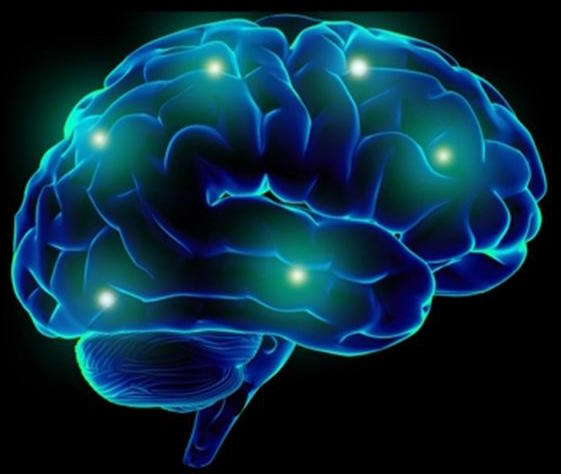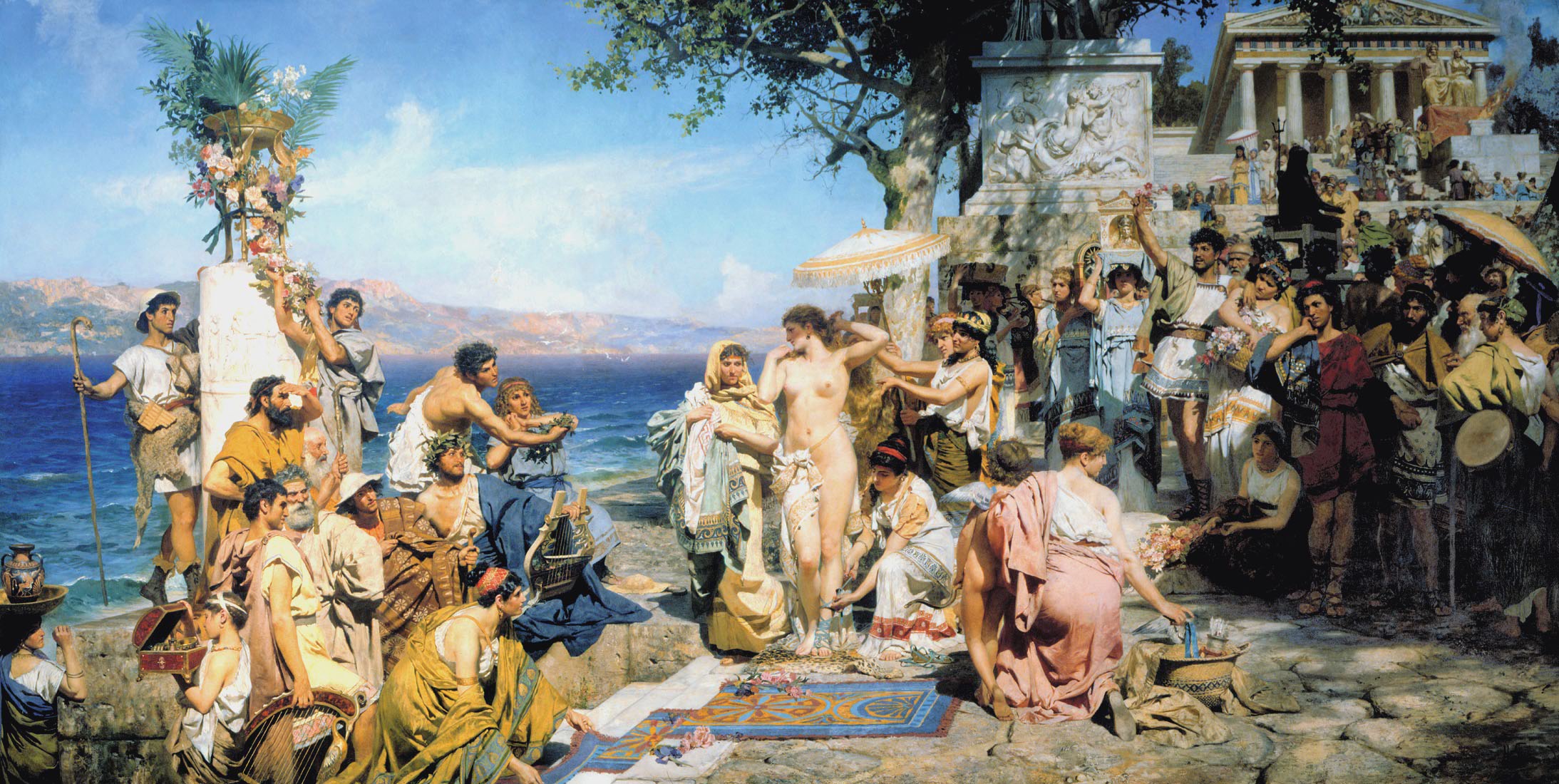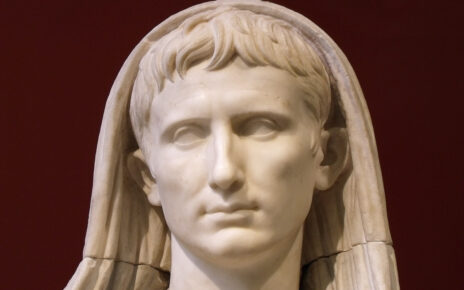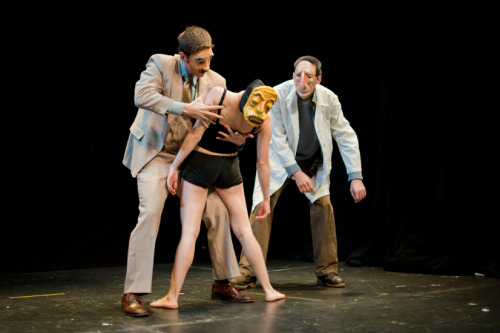The following is Part 3 of a 3-part series by Victor Taylor on how one might reflect theologically on Jesus and the Christian message from a Derridean perspective that departs significantly from the work of John D. Caputo. The first part was published in Religious Theory on April 27, 2016. The second part was published on May 6 and considers the meaning of the term “heritage.” This final section explores what is implied by the concept of “plasticity” as applied to Jesus.
The now spectralized inheritances of Christianity along with a deconstructing Jesus-subjectivity explicitly point to a truly radicalized Jesus-subject that is exactly the opposite in form from the subjectivity that is affirmed by the traditional Christian theological view—Jesus, from this perspective, in his divine presence, works to restrict the Christian heritage and subsequently makes strictly pure a Christian (Christomimetic) subjectivity. That is to say, the tension between heritage and inheritance resides in the opposition between a spectralized, unrestricted Jesus-subjectivity and a ghostly, restricted Jesus- identity.
When one merges Raschke’s GloboChrist with the Derridean concept of spectrality, the “Great Commission” of Christianity takes on a radical new meaning—The Christian heritage, through a deconstructing Jesus-subjectivity, becomes radically “unrestricted.”
This new meaning, I will argue, is the heightened awareness of a new responsibility, as an “impossible task,” to the hauntological dimension of a reconfigured figure and heritage. The Christian inheritors, finding themselves in a “double-bind,” must come to view Jesus as a specter and, simultaneously, view the heritage that emerges from this spectral figure as being thoroughly “plural-relational-global” in its historical and theological aporetic reality:
Jesus contextualized! He did not give scrupulous arguments for some theological position or interpretation he had chosen to defend against other “lawyers” or gentile opponents. Jesus contextualized because he came to reveal the Father. Jesus revealed the Father in his teachings, which were always contextualized in terms of his relational dealings with others, especially those who were neither morally nor doctrinally pure— prostitutes, tax collectors, and thieves, as well as the unlearned and unwashed.28
A “contextualizing Jesus” is what I would call a Jesus who is “deconstructing” and is “deconstructed,” along with deconstructed/deconstructing received Christian heritage.
As Raschke describes him, this so-called traditional Jesus would from my discussion differ from a “spectral Jesus”—one that we begin to see the plural possibilities of in Derrida’s hauntology “heritage.” More precisely, these possibilities for subjectivity reside in the formation of emergent figures, which are un-strict, unrestricting, and plural. What is important to note here is not only the “global” processes of “contextualization/deconstruction,” which is fundamental to the incarnation itself, but the sharp contrast between traditional doctrinal purity and hauntological, relational unrestrictedness in the Christian inheritance—bearing witness to the existence of many “shares” of a tradition/heritage.
It is, taking from Raschke’s perspective, that the two are mutually exclusive, with one sense of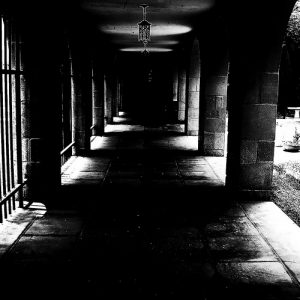 inheritance negating the other. That is to say, “doctrinal purity,” which is the “strict purity” of a traditional heritage, produces strict non-relationality and oppressive exclusivity—subjects and subjectivities are presumed to not fully exist when they are situated outside of a traditional heritage or “formulation.” By contrast and from my reading of Derridean hauntology and Raschkean globo “relationality,” spectrality radicalizes a Christian heritage, opening it to the discarded margins and negations of its former restrictiveness.
inheritance negating the other. That is to say, “doctrinal purity,” which is the “strict purity” of a traditional heritage, produces strict non-relationality and oppressive exclusivity—subjects and subjectivities are presumed to not fully exist when they are situated outside of a traditional heritage or “formulation.” By contrast and from my reading of Derridean hauntology and Raschkean globo “relationality,” spectrality radicalizes a Christian heritage, opening it to the discarded margins and negations of its former restrictiveness.
In this sense, not only do existents exist within the space of inheritance, in this case Christian, but so, too, do non-existents, as “relational” possibilities, which I would argue ties back to Raschke’s relationality of a uniquely global Christ as a “GloboChrist.” If we are to then see Jesus as contextualized, having a Jesus- subjectivity rather than a Jesus-identity. This would be a Jesus-subjectivity as a Jesus-event that is deconstructing and deconstructed. In this instance, I would say that we also need to see the theoretical potential of a forceful and radical plasticity within a Jesus-subjectivity, a radical plasticity that allows for the emergence of the plurality of inheritances as impossible responsibilities without a complete origin or a closed finality.
If Derrida’s Specters of Marx is perhaps less about the ideological shoring up of a properly named Marxist “heritage” and, as I have argued, more about a “certain spirit of Marxism”29 or the general process of spectralization of Marxism, then it is reasonable for us to then examine the extent to which Derridean spectrality, as it is formed around the ineluctable moment of ghost- chasing and ghost-making, continues to be relevant to the “heritages” surrounding “Jesus” and “Christianity.” We already have seen from John D. Caputo’s discussion of Marx’s “double bind,” The Prayers and Tears of Jacques Derrida, that an “ontology of presence” leads to an instance in which a ghost is simultaneously removed and then inconspicuously (re) installed from and into a heritage. Once this process is understood, the crypt can never be fully closed.
The Derridean lesson to be drawn from this recounting of the “double bind” is rather stark. We learn that an appeal to “heritage” alone cannot sufficiently exorcise ghosts, although it may conjure them. By this point I mean to emphasize that spectrality should be seen as a condition that is specifically haunted by the unavoidable breakdown of a particular binary arrangement (ghostly presence/ghostly absence) that presumes the totality of a heritage.
Derrida says quite clearly that “. . . a radicalization is always indebted to the very thing it radicalizes.”30 In other words, from this observation, there is no purely “outside” the radicalized thing, no way out of the collapsing opposition—each radicalization or, perhaps, spectralization arises from the supposed closed “thing” in its philosophical, religious, literary, or artistic metaphysics of presence. Moreover, if this attentiveness to non-closure is indeed one of the primary lessons of Specters of Marx, then it is crucial to further examine the significance of spectralization in other heritage-worlds, namely “Jesus interpellated” heritage-worlds—worlds, artistic, literary, political, and theological, in which Jesus “calls” many subjectivities into existence.
I will add here one more important link onto the series of incomplete ontology, unfinalizeable teleology, and spectral subjectivity, the concept of aporetic plasticity. The Derridean discussion of heritages thus far points to the possibility of “plastic” heritages. The context for this may be found in Catherine Malabou’s book entitled The Future of Hegel: Plasticity, Temporality and Dialectic. Malabou, informed by Derridean deconstruction, provides a preliminary definition of “plasticity” that relates to two, yet intertwined, aspects of the concept of plasticity, aspects that are relevant to the formation of worlds and subjects as I have been discussing it.
The first, most common meaning of “plasticity” refers to that which is changeable or malleable—“susceptible to changes in form.”31 The second meaning of the term that Malabou gives emphasizes plasticity’s “power to bestow form, the power to mould,”32 which, as she notes, gives meaning to the terms “plastic surgeon” and “plastic arts.” It is important to further consider the significance of this duality as it relates to Jesus’s overall plasticity without finality within a heritage space that is formed and forms by the demand of a bequeathal.
First, there is plasticity as it relates to Jesus’s capacity to be the amendable condition of what I’ve referred to as a (plural) heritage-worlds and, second, to a plasticity within Jesus as the capacity to call forth or produce or shape subjectivities in those worlds. First and most obvious, Jesus is a historical and theological figure who is himself supremely “plastic,” malleable; that is to say, in the western humanities, as well as other non-western traditions, Jesus “morphs” into a very wide array of images—sage, healer, prophet, zealot, Savior, apocalypticist, atheist.
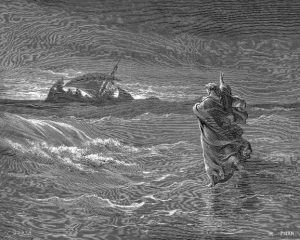 In addition to these images, there are, perhaps, representations of Jesus that suggest a higher degree of plasticity, which brings me to my second point, plasticity as “bestowing form.” In this sense of the term, with each subject-iteration of Jesus along this range of plasticity, there lies a “production” of sub-attending mimetic subjectivities or subject-heritages. In other words, every “modelization” of Jesus-subjectivity carries with it a “heritage” within which people can experience a “Christo-mimetic-subjectivization.”
In addition to these images, there are, perhaps, representations of Jesus that suggest a higher degree of plasticity, which brings me to my second point, plasticity as “bestowing form.” In this sense of the term, with each subject-iteration of Jesus along this range of plasticity, there lies a “production” of sub-attending mimetic subjectivities or subject-heritages. In other words, every “modelization” of Jesus-subjectivity carries with it a “heritage” within which people can experience a “Christo-mimetic-subjectivization.”
For instance, if Jesus “is” a zealot, then a follower can be a Christian “zealot” or, correspondingly, a Christian “apocalypticist,” or, for that matter, a Christain “atheist.” In the extreme, if, as Susannah Heschel describes in her book The Aryan Jesus, Jesus “is” not Jewish, but an Aryan, then a follower of Jesus in Hitler’s Germany could more easily reproduce a Nazified Christian subjectivity.33
This, of course, is not to say that a Nazified Jesus is in any way consistent with the even the broadest Christian tradition; it is not. What Heschel’s research shows, however, is that Jesus’s plasticity is historically, politically, theologically, and literally uniquely expansive—even to the point where a Jesus-subject can historically, politically, and/or theologically appear that is diametrically opposed to the most basic understandings of the Gospel’s message of love.
This radical plasticity is in a sense “ontological” plasticity, plasticity without restriction, beginning to end—even if it leads to a “Nazified Jesus” as Heschel describes. In this context, it is crucial to understand the relationship between an incomplete ontology, unfinalizeable teleology, and the modelization of (dis)emergent subjectivities, especially as it informs the direct production of Jesus-subjectivities in philosophy, religion, literature, and politics. Each and every iteration of Jesus’s many historical, cultural, ethnic, and theological subjectivities or subject- heritages allows for the (dis)emergence of a particular and corresponding “Christian” subjectivity—a plastic Christo-mimetic “Truth” of identity to be lived out in the world. It must be remembered, however, that this “Truth” is not univocal, Platonic; it is a “Truth-event” (to borrow slightly from Alain Badiou) that reveals an aporia or belongs to the structure of the aporia—the undetermined “structurality” of structure.
Derrida observes in Aporias that what I’ve described thus far as a (dis)emergent or deconstructing subjectivity within a pluralized Christian heritage begins with a more prior “desedimentation of the theological strata hiding the original nakedness of the evangelical message to be restored.” This “desedimentation,” however, points to two forms of tradition-oriented deconstruction, Lutheran-Heideggerian “destructio” and Derridean deconstructive “inheritance”:
Even before this historical sequence (of between thirty and forty years), one must remember the Nietzschean, Freudian, and above all Heideggerian premises of deconstruction. And especially, in relation to Heidegger, that there is a Christian, or more precisely a Lutheran tradition of what Heidegger calls Destruktion. Luther, as I describe in my book on Jean-Luc Nancy and what Nancy calls the “deconstruction of Christianity,” was already talking about destructio to designate the need for a desedimentation of the theological strata hiding the original nakedness of the evangelical message to be restored.
What interests me more and more is to make out the specificity of a deconstruction that wouldn’t necessarily be reducible to this Lutheran-Heideggerian tradition [my emphasis]. And that’s perhaps what differentiates my work from those who are close to me, in France and abroad. Without refuting or rejecting anything at all, I would like to try to make out what separates an ongoing deconstruction from the memory it inherits, at the very instant when it is reaffirming and respecting that memory’s inheritance . . . .34
Here, Derrida, referring largely to the tradition informing Jean-Luc Nancy’s deconstruction of Christianity, pauses over the issue of “inheritance” as that which demands reaffirmation and respect, which, as Derrida comments, points to a deconstruction that would not be “necessarily” reducible to the “Lutheran-Heideggerian tradition.” This deconstruction I would argue is different from the generic work of “auto-deconstruction” in which the structurality of the structure refuses to uphold opposing terms—heaven and earth. More precisely, Derrida is pointing to the ways that “memory’s inheritance” is itself a deconstruction that relies upon a palintropic maneuver rather than a destructive one.
Sean Gaston, for instance, in Starting With Derrida distinguishes between the palintrope fromthe palindrome in the following way: “. . . a palindrome, a word or a phrase or number that reads the same backwards as forwards . . . . a palintrope has a slightly different rhetorical flourish: it starts differently, with a start, it startles itself as it starts again.”35
The palintropic, deconstructive character of “memory’s inheritance” requires that in the case of Christianity’s deconstruction a “returning” (through “memory-work”) take place. This would amount to a return to thinking that turns back on itself, startles itself with its possibilities for thinking anew. If, contrastively, auto-deconstruction “levels” oppositions/contradictions within the tradition of Lutheran-Heideggerian destruction, palintropic deconstruction (“inheritance- deconstruction”) thus opens upon a creative plurality of traditions or heritages.
This distinction between destructive and creative trajectories of deconstruction speaks also to a general (mis)understanding of deconstruction—there is no meaning only the destruction of sense in texts, traditions, heritages, etc. Derrida, here, affirms the contrary; there is a creative overabundance of meaning, but non-univocal meaning as the “possibilities for” meaning in heritages. So, when heritages deconstruct, they do not necessarily auto-deconstruct or only auto- deconstruct. There is a palintropic deconstruction that is not reducible to destruction—instead, we are presented with a deconstruction that is plastic in that it is related to “memory’s inheritance,” creative, malleable, and forming.
This particular creative aspect of deconstruction is crucial to understanding my argument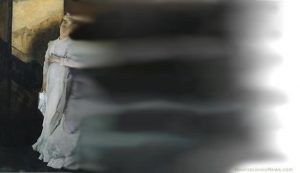 regarding Derrida’s perspective on the Christian heritage as it is derived from Specters of Marx. In this instance, “memory’s inheritance,” as the work of deconstruction, must, as Derrida states, “untie” itself from both a complete destruction of or the monolithic revelation of an original Christian message.
regarding Derrida’s perspective on the Christian heritage as it is derived from Specters of Marx. In this instance, “memory’s inheritance,” as the work of deconstruction, must, as Derrida states, “untie” itself from both a complete destruction of or the monolithic revelation of an original Christian message.
For a certain Christianity will always take charge of the most exacting, the most exact, and the most eschatological hyperbole of deconstruction, the overbid of Hoc est enim corpus meum. It will still make the sacrifice of its own self-deconstruction. Hey, Sade- go for it! For there is deconstruction and deconstruction. Let us never forget the Christian, in fact, Lutheran, memory of Heideggerian deconstruction (Destruktion was first destructio by Luther, anxious to reactivate the originary sense of the Gospels by deconstructing theological sediments). Let us never forget this, lest one mix up all the “deconstructions” of this time. And of the world. But in truth, one can never forget this
Christian (Lutheran, Pascalian, Hegelian, Kierkegaardian, Marxian, and so forth) memory when one reads Heidegger, when one also questions his denials. A “deconstruction of Christianity,” if it is ever possible, should therefore begin by untying itself from a Christian tradition of destructio.36
This lengthy passage provides the context for the previous quote from Derrida and points to a highly charged contest over the place of deconstruction in Christian theology. The standard deconstructive turn on Christianity leaves the Christian heritage “destroyed,” in a Nietzschean sense. However, there are other theological traditions, Christian “negative theology,” for instance, that view deconstruction as affirming a “traditional” Christian heritage. The difficulty lies between these two versions of deconstruction—atheistic and theistic. Clearly, Derrida has not affirmed either, the “death” of Christianity nor Christian theology via deconstruction’s presentation of radical alterity interpreted as God. This is and will be an on-going debate around Derrida’s theological application.
(Im)plastic Specters
Just as there are many instances of Jesus’s plasticity across the western humanities and non- western humanistic traditions, there also are heritages of “implasticity,” strong orthodox injunctions against such operations of plasticity in both senses of the term. The most obvious examples of these restrictions (aesthetic and theological) come from the field of art history in which painters such as Caravaggio (1571-1610) and Rembrandt (1606-1669) who, respectively, attempted to portray Jesus outside the representational, theological “norm” or orthodox-heritage.
One of the most famous examples of this is Caravaggio’s Calling of St. Matthew in which Jesus appears in the dark confines of a tavern, seeking the “tax collector” Matthew. While the painting
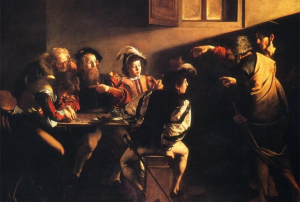
alludes to Michelangelo’s The Creation of Adam, with Jesus’s hand reaching out to Matthew, the context is realistic and gritty—a primary instance of Caravaggio’s “naturalism.” Jesus, in the painting, has a realistic human body; he occupies a human space in which the ambient light co- mingles with divine light to form a faint halo above his head; his common robe contrasts with the fine apparel of Matthew and his attendants. Jesus is, finally, ordinary and material—outside the implastic heritage-subjectivity of the Catholic Church at the time.
One could even go so far as to say that Caravaggio’s painting makes the sacred, in general, profane, as with The Death of the Virgin in which Andrew Graham-Dixon states that “never before in the history of Christian painting had Mary, mother of God, been made to seem as poor and frail and vulnerable as this. Wearing a simple red dress, unlaced at the bodice to make hermore comfortable in her last moments, she lies stretched out on the makeshift bier of a plank of wood. She looks shockingly dead.”37
Caravaggio’s “naturalism,” featuring “shockingly dead” holy figures, opens a crucial space to ask questions about (dis)emergent subjectivities in the context of the “profanation” of the sacred, which occurs not only in painting but, as we will see, appears in literature as well. In other words, more specifically in relation to Jesus’s subjectivizing, plastic power, What subjectivities does “He,” as a strangely “common” and “plastic” figure, call forth?
Of course, for some of Caravaggio’s contemporaries, this was not the proper question to be asking—the role of painting was to affirm theological implasticity. St. Matthew and the Angel (first version), for instance, was reported to have “pleased nobody.”38 Giovanni Pietro Bellori describes the rejection of the painting by the priests: “After he had finished the central picture of St. Matthew and installed it on the altar, the priests took it down, saying that the figure with its legs crossed and its feetrudely exposed to the public had neither decorum nor the appearance of a saint.”39 That, of course, was Caravaggio’s aesthetic and theological vision, to make “Christ and his followers [look] a lot more like beggars than cardinals.”40
This was, I will argue, a serious challenge to the supposed implasticity of what Tillich would describe as an “ultimate concern.” Caravaggio, in shaping Jesus into the subject-figure of a “beggar,” opens or threatens to open through painting new heritage possibilities for Christianity, with enormous consequences.
The second art historical figure to be discussed in the context of the “plasticity” of Jesus is Rembrandt. Like his predecessor, Caravaggio, Rembrandt, too, sought the “profanation” of the sacred and his studies of the “face of Jesus” provide an interesting example of subject modelization in religious and theological discourse—perhaps with the same radical consequences for theological implasticity as Caravaggio. George S. Keyes in “Perception and Belief: The Image of Christ and the Meditative Turn in Rembrandt’s Religious Art” recounts F. Schmidt-Degener 1915 reception of a Head of Christ as an image of Jesus that “rejected the traditional, more Apollonian image of Christ found in Italian art, [replacing] it with an image of a Nazarene so believable that . . . it was one of the most treasured monuments of Christian art.”41 Keyes adds that this response was not peculiar to Schmidt-Degener.
In fact, Keyes states, “what this group of early twentieth-century admirers found so compelling in these painted images of Christ was Rembrandt’s bold redefinition of Jesus not as a heroic figure embodying suffering but as an inward, undemonstrative beings who compels reverence by his very existence in the mind and imagination of the beholder.”42 Here, in Rembrandt’s work, we see the plasticity and shaping power of Jesus’ image, a power to “morph” or (dis)emerge out of the Apollonian subject and “morph” or (dis)emerge into the Nazarene subject, which is similar to Caravaggio’s transformation of Jesus and his followers into beggars from saints. Moreover, we see the plastic, bestowing power to shape a Christo-mimetic subjectivity through the “mind and imagination” of the viewer, with the image of Jesus becoming an “object of meditation.”43
see the plasticity and shaping power of Jesus’ image, a power to “morph” or (dis)emerge out of the Apollonian subject and “morph” or (dis)emerge into the Nazarene subject, which is similar to Caravaggio’s transformation of Jesus and his followers into beggars from saints. Moreover, we see the plastic, bestowing power to shape a Christo-mimetic subjectivity through the “mind and imagination” of the viewer, with the image of Jesus becoming an “object of meditation.”43
The following issue to be discussed, then, rests how the object of meditation is contextualized— what series of assemblages of relationality, in this instance theological, are opened, as heritages, to the “meditating” viewer?
These two art historical “image-inheritances” demonstrate the extent to which widely available depictions of Jesus can produce instances not only of visual plasticity but also theological plasticity—Jesus “becomes,” as we have seen, in this dynamic movement from sacred to profane the focal point for new “theological” subject-possibilities or subject-heritages. Visual leading to theological plasticity is related to but, I would argue, distinct from identity plasticity.
In religious and cultural studies, the most common instance of visual-theological implasticity, and the one with which readers may be most familiar, is, of course, representing Jesus in art as a white European—clearly the most common depiction in the western humanities and one which points to white Euro-centric subject-heritages. By transforming the representation of Jesus beyond this limited identity to better fit with the extensive range of ethnic possibilities, such as an Asian Jesus, Latino Jesus, or Black Jesus, the possibilities for subject modelization and production dramatically increase, as we have seen in the context of a “multi-cultural” Jesus.
While it is this dimension of representational plasticity/possibility that is most often observed within a multi-cultural setting, it still remains a question as to what extent a shifting of representational identity would initiate a shift in a corresponding theological subjectivity—a shift in one domain doesn’t necessarily produce a new “theological” subject-heritage in another. That is to say, the critical shift to emphasize here is not so much the one from one identity position to another identity position within the discourses of culture and ethnicity, although significant, but it is the more fundamental shift away from a presumed subject of “universality”—the normative subjectivity of the “White Face,” as Deleuze and Guattari refer to it.
The process of “plasticization,” which I would describe as being determined by the (haunto)logic governing the formation of subjectivities, as it is found in Specters of Marx ,especially in relation to hauntology’s fracturing of universality by way of the “visor effect,” can be draped onto something one might call the “theo-spectralization” of Jesus. By this I mean a very specific Jesus subjectivity that undergoes plastic adjustment as an image (art or literary) and a Jesus subjectivity that produces or instigates plastic adjustments. In other words, each spectralized pictorial, theological, and, as we shall see, literary depiction of Jesus makes possible, through its transformation, a radical subject-heritage.
In fact, as I will argue, it is within the space of art and literature that these “specters of Jesus” most critically (dis)emerge to challenge the putative universality of an implastic heritage, any heritage, and the subsequent bequeathals that come to define it. A “spectered” or “spectralized” Jesus, then, does more than add another identity position to the range of possible identity positions that are indexed to culture, for instance—this particular spectralization of Jesus, one that radically subverts the conditions of subjectivity, like Derrida’s subversion of Marxism’s subject heritage, fundamentally calls into question the concept and basic mechanisms of theological, philosophical, and literary (artistic) subjectivization itself.
The wider significance of this move to what I am calling spectral subjectivities is confirmed by a reading of Simon Critchley on the general problem of a post-deconstructive subjectivity in Ethics-Politics-Subjectivity: Essays on Derrida, Levinas, and Contemporary French Thought. Critchley writes, “[m]etaphysics is always a metaphysics of the subject, insofar as philosophy has always sought to name the subjectum, the ultimate foundation or beginning point for an understanding of entities, or to offer a thesis on the Being of beings.”44 Critchley goes on to add that, “[i]n this broad sense, the master words of premodern metaphysics – eidos, ousia, causa sui – are all subjects.
The subject is the subject of metaphysics, and philosophy deals with the determination of the subject as the ultimate foundation upon which entities become intelligible. The possibility of the subject is the very possibility of philosophy.”45 I would only add that while the “possibility of the subject is the very possibility of philosophy,” it is the “possibility” of theology, art, and literature. Moreover, following the logic of hauntology, the possibility of the subject . . .” is the very possibility of subjectivity, as a condition of plasticity.
Given this description that is provided by Critchley, one could ask, How does this “very possibility,” as he defines it, of the subject occur? The answer, from Derrida vis-à-vis Heidegger, comes by way of a “post-deconstructive subjectivity.”46 In response to the issue of subjectivity, Derrida comments in a conversation with Jean-Luc Nancy that one would “seek a new (post-deconstructive subject) determination of the responsibility of the ‘subject’” through a “relation to the ‘yes’ or to the Zusage presupposed in every question.”47 This is a crucial insight by Derrida and is, I will argue, directly related to the problem of “inheritance” or bequeathal as he discusses it in Specters of Marx.
The “founding” moment of a post-deconstructive subjectivity—one that occurs in the midst of an awareness of a relation to the “yes”—is conditioned by the Zusage (vow, pledge, commitment, acceptance, promise, covenant, or undertaking) attending the inheritance or heritage giving rise to the subject and not just the identity position. The relation to the “yes” (Zusage) pre-figures the subject or represents the inaugural demand of the “bequeather” that interpellates or, better, founds the subject within a heritage-space.
 We already have seen in the context of Derrida’s “hauntological analysis” the ramifications of saying “yes” to Marx. However, the topic moving forward will fall under the still “haunted” historical and theological question, What does it mean to say “yes” to Jesus? What is the Zusage, if there is one, relevant to the ‘Christic moment,” the determination of a responsibility in relation to a spectralized Jesus? Or, what is the commitment, promise, vow, undertaking that will emerge as a hauntological Christianity? The answer may appear as a reaffirmation of an orthodox, implastic heritage or emerge alongside something like Raschke’s “GloboChrist,” which sees the Zusage as a responsibility to a foundational or radical “force” of relationality.
We already have seen in the context of Derrida’s “hauntological analysis” the ramifications of saying “yes” to Marx. However, the topic moving forward will fall under the still “haunted” historical and theological question, What does it mean to say “yes” to Jesus? What is the Zusage, if there is one, relevant to the ‘Christic moment,” the determination of a responsibility in relation to a spectralized Jesus? Or, what is the commitment, promise, vow, undertaking that will emerge as a hauntological Christianity? The answer may appear as a reaffirmation of an orthodox, implastic heritage or emerge alongside something like Raschke’s “GloboChrist,” which sees the Zusage as a responsibility to a foundational or radical “force” of relationality.
Before looking more closely at the implications, historical and theological, of the concept of “specters of Jesus,” it is important to briefly examine the ways that Derrida links subjectivity, specifically a post-deconstructive subjectivity, to Heidegger’s use of Zusage. The word, I should note, does not appear in either the English or French versions of Specters of Marx. Neither does the word appear in Archive Fever: A Freudian Impression. I mention this because Specters of Marx (1993) and Archive Fever (1995) appear well after Of Spirit (1987), where it is a critical within an era of Derrida’s Heidegger work in which he was particularly concerned with or perhaps more accurately particularly focused on the status of the “aporetic supplement” in Freud and Heidegger.
The word is used in “Force of Law: The ‘Mystical Foundation of Authority’” (1990) in reference to Heidegger’s distinction between philosophy and theology but after that he more or less abandons it. The point that I am making here regarding Zusage concerns the conspicuous way the term becomes absent but also clearly remains (spectrally) part of Derrida’s later works. It is clear that Derrida’s discussion of inheritance and heritage in Specters of Marx conceptually relates directly to Zusage, especially in the context of “bequeathal.”
That the word falls away after Of Spirit and “Force of Law” is interesting, especially given that the final note in Specters of Marx, which seems to directly call for its use: “Freud and Heidegger. In The Post Card . . . the signatory of Envois couples them like two specters [my emphasis]: ‘Here Freud and Heidegger, I conjoin them within me like two great ghosts of the ‘great epoch.’ The two surviving grandfathers. They did not know each other, but according to me they form a couple, and in fact just because of that, this singular anachrony.’” Derrida goes on to define the “singular anachrony” that couples the “surviving grandfathers.” He writes, “[g]iven that a revenant is always called upon to come and to come back, the thinking of the specter, contrary to what good sense leads us to believe, singles toward the future. It is thinking of the past, a legacy that can come only from that which has not yet arrived—from the arrivant itself.”48
Zusage, as I have described it here, participates directly in hauntology and spectrality; that is if we read correctly Derrida’s “non-arrival” of the past as legacy. In this sense, Zusage creates a subject through an implastic covenant, a subject who is placed under an obligation, included in a heritage. What must be remembered, however, is that every obligation or inclusion in a heritage, as Derrida notes, is attended by a sifting and filtering—it is a plastic inclusion. The subject, even beyond its volition, is simultaneously located along different and differing points within an inheritance—since deconstruction is an inheritance, as he notes.
When inheritances are presented as obligations, they are accompanied by different and differing subject-worlds. Each subject-world, as a result, calls out a demand or demands and each emerging subject takes shape around that or those particular call(s). This “plasticity” of the subject and the heritage may explain the reasons for Derrida sets aside the implastic term Zusage. Perhaps it lacked the pliability that one finds more readily in heritage or legacy.
If, as Derrida says, Christianity must undergo a theological “untying” from the strictures of destructio, then perhaps Heideggerian Zusage is precisely that mode of implasticity that must be avoided if a proper “untying” can occur. Heritage, in this context, then, is more open to a reshaping, a radically palintropic discursive moment favoring plasticity, perhaps even a plasticity that ultimately throws open the very condition for heritage in the first place.
The call(s) of heritage within this arrangement startle the subject, throwing into crisis the shape that it may take as it wraps itself around a world—a world that continually arrives and departs, as I discussed in the previous section. The question moving forward is, what degree of plasticity or implasticity can be assigned to Jesus, as a figure who both shapes subjectivity and is shaped by the calls to subjectivity? We will begin with traditional and contemporary configurations of Jesus’s subjectivity. In particular, we will examine the contentious debate regarding the subjectivity of Jesus ala John Milbank and Slavoj Zizek’s dueling concepts of the monstrosity of Christ, dialectic or paradox.
Victor Taylor is chair of the Department of English and Humanities and professor of literature, philosophy, and religious studies at York College of Pennsylvania. He is also director of the center for civic humanities at York. He is the executive editor of The Journal for Cultural and Religious Theory and director of academic publishing for Davies Group, Publishers. He is author of Para/Inquiry: Postmodern Religion and Culture (Routledge 2000), The Religious Prayed, The Profane Swear (Pen Mark Press 2002/ Second expanded edition, 2012), and Religion After Postmodernism (The University of Virginia Press 2008). With the late Charles E. Winquist, he co-edited Postmodernism: Critical Concepts (Routledge 1998) and The Routledge Encyclopedia of Postmodernism, (2000: Spanish 2002, Russian 2003).
___________________________________________________________________
28 Carl A. Raschke, GloboChrist: The Great Commission Takes a Postmodern Turn (Grand
Rapids: Baker Academics, 2008), 118.
29 Jacques Derrida, 1994, 92.
30 Jacques Derrida, 1994, 92.
31 Catherine Malabou, The Future of Hegel: Plasticity, Temporality and Dialectic (New
York/London: Routledge, 2005), 8.
32 Malabou, 2005, 8.
33 Susannah Heschel, The Aryan Jesus: Christian Theologians and the Bible in Nazi Germany
(Princeton: Princeton University Press, 2008).
34 Jacques Derrida, Aporias: Dying—Awaiting (One Another at) the “Limits of Truth,” trans. Thomas Droit (Stanford: Stanford University Press, 1993), 137-138.
35 Sean Gaston, Starting With Derrida: Plato, Aristotle, and Hegel (New York: Continuum,
2007), ii-iii.
36 Jacques Derrida, On Touching—Jean-Luc Nancy, trans. Christine Irizarry (Stanford: Stanford
University Press, 2005), 60.
37 Andrew Graham-Dixon, Caravaggio: A Life Sacred and Profane (New York: W.W. Norton & Company, 2010), 310.
38 Graham-Dixon, 2010, 236.
39 Graham-Dixon, 2010, 236.
40 Graham-Dixon, 2010, 236-237.
41 George S. Keyes, “Perception and Belief: The Image of Christ and the Meditative Turn in Rembrandt’s Religious Art” in Lloyd DeWitt, Rembrandt and the Face of Jesus (New Haven: Yale University Press, 2011), 1.
42 Georges S. Keyes, 2011, 1.
43 Georges S. Keyes, 2011, 1.
44 Simon Critchley, Ethics-Politics-Subjectivity: Essays on Derrida, Levinas, and Contemporary
Thought (London: Verso, 2009), 53.
45 Critchley, 2009, 53.
46 See Critchley’s lengthy discussion in the section entitled ‘Post-Deconstructive Subjectivity” in Ethics-Politics-Subjectivity: Essays on Derrida, Levinas, and Contemporary Thought (London: Verso, 2009), 70-82..
47 Critchley, 2009, 70.
48 Derrida, 1994, 191.
